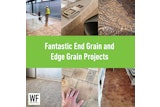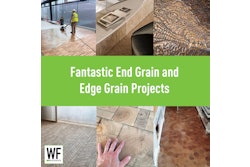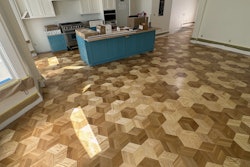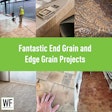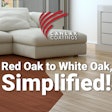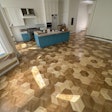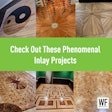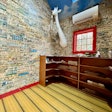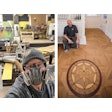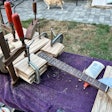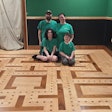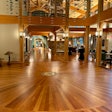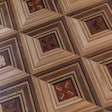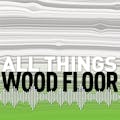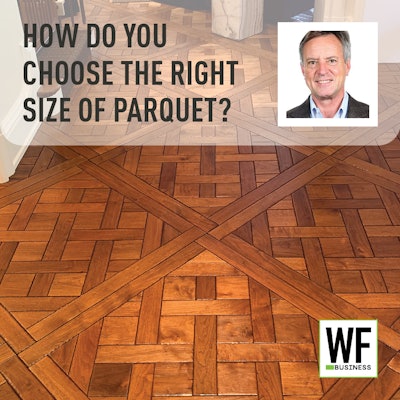
On a regular basis in the wood flooring industry Facebook groups you’ll see someone ask this question: How do I know what dimensions to make the parquet (or patterned flooring) to suit the client’s space? Here are some guidelines to consider when working with parquet.
There are three standard sizes of parquet flooring patterns: small-, medium- and large-format parquets.
Small-format parquets: These include basketweave, herringbone, Haddon Hall, chevron, Marie Antoinette and Monticello, and they are usually built using elements that present a single pattern less than 18 by 18 inches.
A simple basketweave pattern begins with a 6-inch square surrounded by overlapping 3-by-9-inch rectangles (pickets). The more complicated Legendary Basketweave features a 6-inch square surrounded by three pickets measuring 3 by 15 inches on all four sides. Monticello parquet is basically a simple basketweave where the pickets are mitered instead of overlapping. Herringbone is a presentation of overlapping, interweaving rectangles. Chevron is herringbone with mitered pickets. Haddon Hall, like the basic basketweave pattern, begins with a 6-inch square surrounded by overlapping pickets on four sides, but typically the pickets are the same width as the square, so they measure 6 by 12 inches. Marie Antoinette is basically a basketweave where the grain of the primary square runs diagonally.
These patterns can be used with or without borders to add visual interest to smaller areas in homes, entries, kitchens, foyers and even bathrooms (if your species selection is compatible with water hazard constraints.)
 This mini-basketweave parquet features riftsawn and quartersawn white oak.
This mini-basketweave parquet features riftsawn and quartersawn white oak.
 This basketweave parquet is walnut with wenge features.
This basketweave parquet is walnut with wenge features.
 Antoinette-patterned parquet. For more on this project, click here.
Antoinette-patterned parquet. For more on this project, click here.
 The Brittany parquet pattern in walnut.
The Brittany parquet pattern in walnut.
 Luxembourg parquet in white oak with an ebony feature strip.
Luxembourg parquet in white oak with an ebony feature strip.
 The Fargeau parquet pattern in walnut.
The Fargeau parquet pattern in walnut.
 The Versailles parquet pattern in walnut.
The Versailles parquet pattern in walnut.
With a few exceptions, small- and medium-format parquets can also be upscaled to present well in larger spaces by partitioning the space in quarters or thirds, horizontally and vertically. Feature strips of a complementary species can add visual interest.










